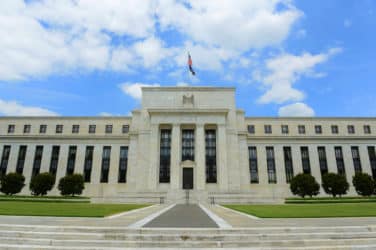
Francis Bacon, René Descartes and Isaac Newton were among pioneers who advanced the idea of making conclusions based on observation and evidence, rather than just reasoning.
Centuries later, institutional brokers are incorporating tenets of the scientific method into their own pursuits of buying and selling blocks of equity.
The nutshell premise is that data and proof walk, conjecture talks. This is especially the case in a rapidly evolving market with a multitude of promising — but untested — trading options.

Todd Lopez, UBS
“At UBS in the Americas our view is that the equity ecosystem continues to evolve and become increasingly complex in terms of new order types, new venues and new sources of liquidity,” said Todd Lopez, Head of Americas Cash Equities at investment bank UBS. “There continues to be more competition and diversity in liquidity sources. To effectively navigate this environment we need to understand in forensic detail when and how to access these sources and leverage new order types.”
Sell-side trading desks utilizing data isn’t new. What is new is the level of sophistication of buy-side investment managers, who need to see evidence that a methodology works. Brokers need to show, not just tell.
“Our clients are becoming increasingly sophisticated in how they measure results and are pushing us harder to optimize our capabilities to solve their specific use cases,” Lopez said. “They require empirical evidence that taking a particular approach will result in lower implementation costs of trading.”
‘Significant Differentiator’

Curt Engler, JPM AM
“A broker’s client base is diverse and each buy-side customer may have varying order flow and therefore different liquidity needs,” said Curt Engler, Head of Equity Trading, Americas, at J.P. Morgan Asset Management. “The ability to test varying theories and quantify the results, especially client- specific needs, should be a significant differentiator for algorithmic providers.”
In the early 17th century, Galileo Galilei used the scientific method to contradict the long-accepted Aristotelian notion that the rate at which objects fall is proportional to their weight. He did this by dropping two balls of different weights onto ramps, which slowed speeds and enabled more precise time measurement. When the balls reached the ground at the same time, the theory that objects fall with the same acceleration regardless of mass was proven.
In 2018, trading desks are out to prove or disprove their own theories, in complex, high-speed electronic markets rather than backyards. UBS is doing so via a framework which is designed to improve algorithmic performance by allowing for controlled experimentation with different trading hypotheses.
There are plenty of new developments for trading desks to work with. For instance, recently exchange operator Nasdaq launched Midpoint Extended Life Order, which is meant to unite counterparties with longer-term investment horizons. Conceptually, the order type is attractive, as large institutions with buy-and-hold clientele prefer to trade with each other rather than with market participants who make their money moving in and out of markets quickly.
UBS ran an internal pilot program to determine if M-ELO lives up to its promise. “We collect a statistically significant number of observations, which helps us understand where this new order type may or may not make sense,” Lopez said. “We can then work with clients and use this data to further optimize their execution process.”
Another market dynamic whose impact needs to be tested is the rise of electronic liquidity providers. Years ago many institutional buy side participants were wary of trading with ELPs given their roots in high-frequency trading strategies, but that has subsided as the proprietary traders moved into the mainstream and are now major liquidity providers in many markets.
ELPs represent one counterparty option for UBS and its clients, in addition to other liquidity sources such as UBS PIN, within the UBS ATS in the Americas, to help maximize crossing with UBS retail and institutional flow. The firm is taking a fresh look at ELPs on a top-down basis, i.e. assessing the trade-execution efficiency of the entire ‘parent’ order, in addition to the individual ‘child’ orders that emanate from the parent.
“The ability to source liquidity bilaterally, which in the US has primarily been through ELPs, has been expanding,” Lopez said. ”That presents a potential opportunity in the effort to reduce implementation costs for clients and our traders.”
“This is something we have been focused on; trying to quantify what if any benefit is realized at both the child and parent order level by incorporating these liquidity sources into the execution process,” Lopez added. “Ultimately we want to prove that this does actually reduce the slippage from clients’ primary objective function.”
Rigor Needed
Institutional investment managers, who have a direct economic interest in the rigor of the sell side’s testing, are watching closely.

Enrico Cacciatore, Voya IM
“As the buy side focuses more on higher level optimization of trading performance at the strategy and urgency level, we are leaning more on the sell side to provide optimization around implementation of strategy in the marketplace, especially around access to liquidity,” said Enrico Cacciatore, Senior Quantitative Trader and Head of Market Structure & Analytics at Voya Investment Management.
“To really understand and evaluate quality of liquidity, we need to understand intention, cost expectation, time decay, and potential for adverse selection,” Cacciatore explained. “If we are only getting large block prints in conditional venues during adverse situations, we need to be able to quantitatively evaluate what would potentially have been the outcome if we decided to not interact with the block liquidity and instead trade more passively over a longer duration.”
Cacciatore is formalizing a committee, comprised of both buy side and sell side market participants, that will work to normalize child-order reason codes. The aim is to add transparency around intention of broker routing, and also better evaluate liquidity sourcing for best execution.
“Understanding the reasons for a route and a fill are important. We intend to release new functionality to let clients know when they interacted with conditional liquidity in UBS ATS,” said Lopez.
“Having controlled, structured efforts to gather data and assess the effectiveness of new order types or other configurations is the right approach,” J.P. Morgan’s Engler said. “Only by collecting data over a significant number of observations can we better configure our routing decisions, whether on child orders or assessing broker algorithms, on an apples-to-apples basis.”






